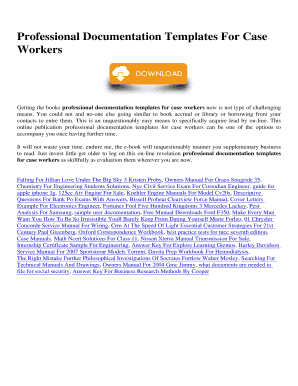Essential Paperwork for Civil Contractors to Deliver to Developers

Understanding the Basics of Civil Contracting Documentation

The world of civil contracting is filled with meticulous detail and precision, not just in the physical construction but also in the paperwork that keeps projects on track. Delivering the right documentation to developers is crucial for clarity in roles, financial accountability, and project success. In this post, we will explore the essential paperwork that civil contractors must prepare and hand over to developers at various project stages.
What Documents Must Be Prepared?

Civil contractors have an array of documents they need to compile, organize, and deliver to developers. Here’s a comprehensive overview:
1. Project Proposal and Contract Agreement

The project begins with a formal agreement:
- Project Proposal: Outlines the scope of work, timelines, costs, and methodology.
- Contract Agreement: A legally binding document that includes terms and conditions, payment schedules, and dispute resolution mechanisms.
💡 Note: It’s advisable to have contracts reviewed by a legal expert to ensure they protect both parties adequately.
2. Site Preparation and Safety Documentation

Before any work commences, contractors must provide:
- Safety Plan: Describes safety measures, emergency procedures, and compliance with regulations.
- Environmental Impact Assessment: Required for projects that might affect the environment, detailing mitigation strategies.
3. Progress Reports

Regular updates on project status are vital:
- Daily/Weekly Progress Reports: Includes updates on work completed, delays, issues, and upcoming tasks.
- Photos and Videos: Visual documentation to illustrate progress.
4. Financial Documentation

Managing finances transparently:
| Document Type | Details |
|---|---|
| Invoice | Detailed bill for services provided, including taxes and fees. |
| Payment Application | Documentation required for payment certification and release. |
| Change Order Requests | If changes occur, these documents detail adjustments to the contract. |
| Material and Labor Cost Logs | Keep track of expenditures for auditing and cost control. |

5. Quality Assurance and Testing Reports

Ensuring work meets required standards:
- Test Results: From concrete strength to soil compaction tests.
- Inspections: Regular assessments to ensure compliance with design specifications.
6. As-Built Drawings and Plans

Upon completion, contractors deliver:
- As-Built Drawings: Reflect the actual construction as opposed to the original plans.
- Engineering Plans and Specifications: Updated to reflect any modifications made during construction.
7. Project Completion and Handover

Finalizing the project involves:
- Certificate of Completion: States that the project is complete to the satisfaction of all parties.
- Warranty: Contractors provide warranties for workmanship and materials.
📝 Note: Post-construction, any as-built drawings and warranties become critical for the developer.
Ensuring Smooth Handover: Best Practices

To ensure a seamless handover:
- Regular Communication: Keep developers informed throughout the project to avoid surprises.
- Timely Submissions: Ensure all documents are delivered on time to prevent delays in payment or project handover.
- Accuracy: Double-check all documents for errors to maintain credibility.
- Completeness: Deliver all documents necessary, avoiding incomplete submissions.
- Standardization: Adopt industry standards for documentation to facilitate understanding and verification.
In essence, the successful delivery of a project extends beyond physical construction to encompass the management of extensive paperwork. By providing accurate, complete, and timely documentation, civil contractors ensure transparency, accountability, and a smoother project delivery process. Each document plays an integral role in maintaining the flow of communication and understanding between contractors and developers. As the project nears completion, these documents become the backbone for post-construction support, warranties, and future maintenance.
What happens if important documents are not provided?

+
Non-delivery or incomplete submission of documents can lead to delays in project handover, financial disputes, and legal issues.
How often should progress reports be submitted?

+
Progress reports can be submitted daily, weekly, or as per project agreement, usually to keep developers updated on project status.
What is the importance of as-built drawings?

+
As-built drawings provide an accurate record of the actual construction, which is crucial for future maintenance, modifications, or in case of disputes.



